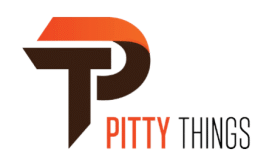What if you could control your ad budget with more precision and only pay when someone actually clicks? That’s the power of the CPC model. For advertisers, it’s not just a cost-effective option, it’s a smart strategy built around flexibility, control, and performance.
Traditional advertising often feels like a gamble. You invest money upfront and hope it turns into results. But with Cost-Per-Click (CPC), you’re not paying for vague exposure. You’re paying for engagement. That shift has changed how many advertisers approach digital campaigns.
Clear Payment, Clear Focus
In a CPC model, payment is tied directly to action. Advertisers only pay when someone clicks on their ad. That means the money goes toward measurable interest, not just visibility. If nobody clicks, the cost is zero.
This shifts the focus to crafting better ads and targeting the right audience. It’s not about throwing your message into the void. It’s about making sure it lands in front of people who are more likely to take action. That kind of accountability is a big part of why the model works so well.
With a CPC ad network, advertisers can test various campaigns without committing large budgets upfront. You can start small, learn fast, and scale what works. That makes it perfect for both smaller businesses looking to grow and larger advertisers optimising for performance.
Adjust as You Go
One of the most appealing features of CPC is how adaptable it is. You’re not locked into a fixed campaign structure. If something isn’t working, you can pause it, edit it, or replace it altogether without wasting money.
That ability to react quickly means campaigns can improve in real time. You can:
- Shift budget toward high-performing ads
- Tweak copy or design to increase click-through rate
- Test different audience segments
- Adjust bidding strategies
- Pause underperforming keywords or placements
There’s room to experiment, which is where a lot of growth happens. Instead of relying on guesswork, advertisers can make decisions based on data. That agility gives CPC a big edge over models that charge based on impressions or reach.
Focus on Outcomes, Not Just Activity
With CPC, the attention is on engagement. It pushes advertisers to care about what happens after someone sees the ad. Are they clicking? Are they converting? This focus naturally leads to better ad quality.
Because payment depends on clicks, there’s a built-in incentive to get the creative right. You can’t just show up and hope for the best. You need to deliver something compelling, clear, and worth clicking.
This tends to raise the bar across the board. Better ad experiences mean more relevant content for users and stronger results for advertisers. It also helps prevent waste. Budgets aren’t spent on passive views, they’re spent on interested prospects.
Easy to Measure and Optimise
Data plays a major role in CPC success. Every click is tracked, and that creates a rich pool of information advertisers can use to sharpen their campaigns.
It becomes easier to:
- See which keywords attract attention
- Understand what types of content perform best
- Identify gaps in targeting
- Pinpoint where conversions drop off
With that kind of insight, marketers can fine-tune their strategies at a much faster pace than with traditional models. You don’t have to wait weeks to see results. You can often spot trends and make improvements within hours or days.
And because the model is based on performance, it naturally aligns with ROI-driven goals. If something delivers a strong return, it gets more budget. If not, it’s removed. That kind of efficiency makes CPC especially attractive for performance-focused teams.
Works for a Wide Range of Goals
CPC isn’t limited to one type of objective. It’s often associated with traffic generation, but it also works well in support of:
- Lead generation – Directing clicks to forms or gated content
- Product promotion – Driving interest in specific items
- Awareness campaigns – Sparking curiosity and engagement
- Remarketing – Bringing back previous visitors with tailored ads
- Content discovery – Pushing blog posts, videos, or articles to new audiences
Its flexibility means advertisers can adapt the model to different stages of the funnel. Whether the goal is to build awareness or close sales, CPC provides a path that focuses on action.
Cost Control Without Compromising Reach
Another reason advertisers appreciate CPC is the ability to set limits. You decide your maximum cost-per-click. You also control daily and monthly budgets, which means you can grow without risking overspend.
This level of control is especially valuable in competitive spaces where cost can spike quickly. If a keyword becomes too expensive, you can shift focus or explore less crowded segments. You’re never forced to compete beyond your means.
At the same time, CPC can still deliver scale. If the targeting is right and the creative resonates, campaigns can reach thousands or even millions. That’s the sweet spot: wide reach, but with meaningful engagement.
Why It Stays Popular
CPC has been around for a while, and it’s not going anywhere. Its staying power comes down to this: it gives advertisers more say in how their money is spent, more control over performance, and more clarity around results.
It avoids the trap of paying for passive impressions. It puts the value on interest and action. And with real-time flexibility, it fits the fast-moving nature of digital marketing.
Other pricing models still have their place, but CPC remains a go-to for one key reason; it delivers performance without locking advertisers into rigid contracts or unclear outcomes.
Why Pay for Potential When You Can Pay for Action?
Most advertising models charge you for the chance to be seen. CPC charges you for being noticed.
That difference matters. It changes how campaigns are built, how success is measured, and how budgets are spent. For advertisers who want to stay nimble, maximise impact, and focus on outcomes, CPC remains one of the most effective models available. In a world where attention is currency, paying only for clicks just makes sense.






